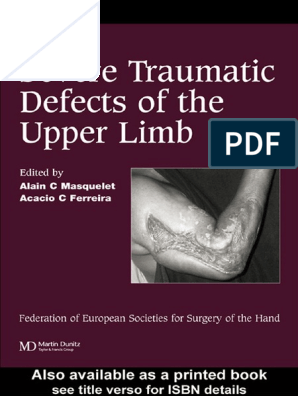0% found this document useful (0 votes)
135 views7 pagesABSTRACT Hand Injury
1) The document is an abstract for a paper presentation on methods for closing soft tissue defects in the hand following injuries.
2) It describes a retrospective study of 10 patients who received treatment for soft tissue hand defects at a hospital in India.
3) The study aims to evaluate different treatment options for soft tissue defects including primary closure, skin grafts, local flaps, and free tissue transfer and their advantages and limitations.
Uploaded by
ManovaPrasannaKumarCopyright
© © All Rights Reserved
We take content rights seriously. If you suspect this is your content, claim it here.
Available Formats
Download as DOCX, PDF, TXT or read online on Scribd
0% found this document useful (0 votes)
135 views7 pagesABSTRACT Hand Injury
1) The document is an abstract for a paper presentation on methods for closing soft tissue defects in the hand following injuries.
2) It describes a retrospective study of 10 patients who received treatment for soft tissue hand defects at a hospital in India.
3) The study aims to evaluate different treatment options for soft tissue defects including primary closure, skin grafts, local flaps, and free tissue transfer and their advantages and limitations.
Uploaded by
ManovaPrasannaKumarCopyright
© © All Rights Reserved
We take content rights seriously. If you suspect this is your content, claim it here.
Available Formats
Download as DOCX, PDF, TXT or read online on Scribd
/ 7




















































































